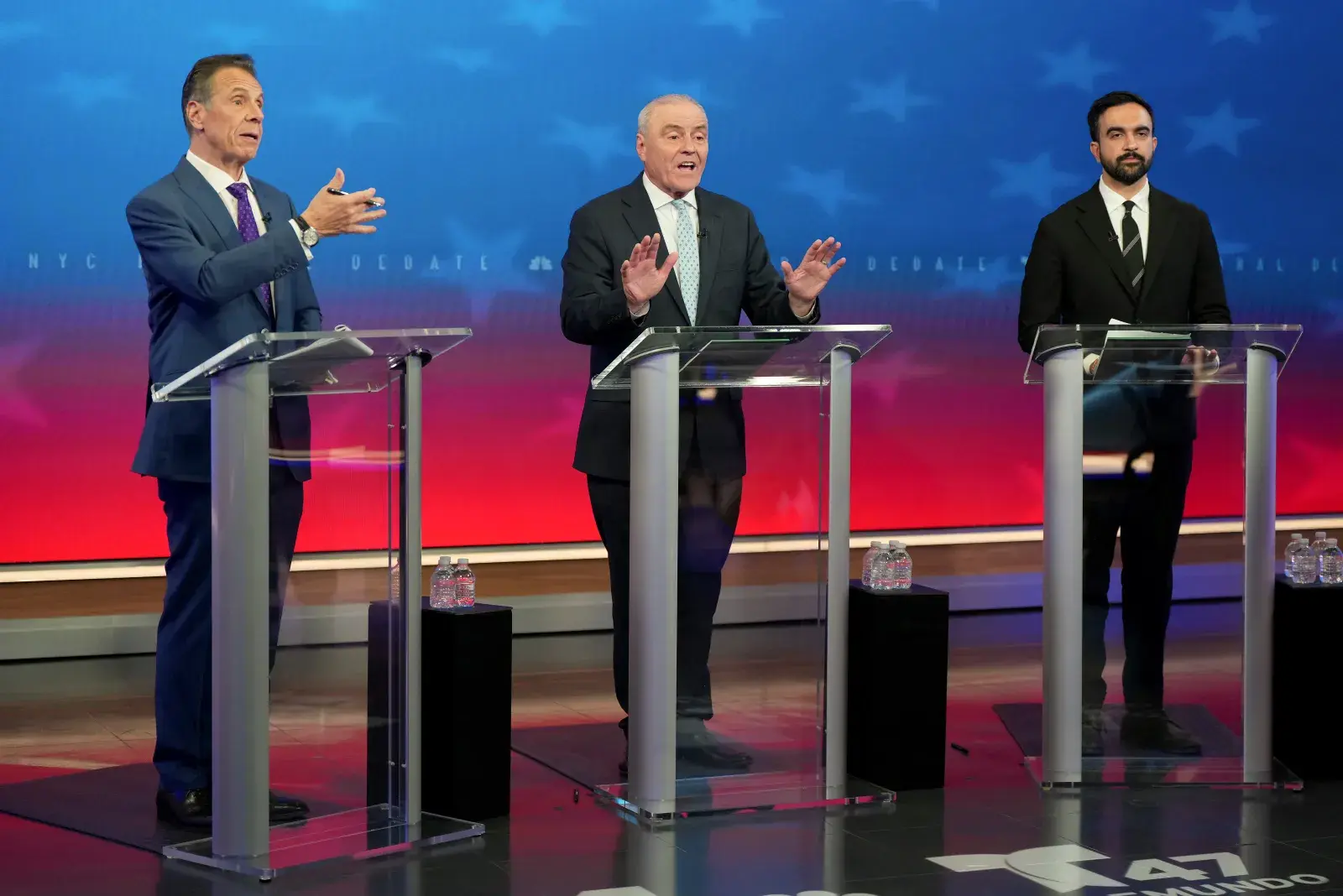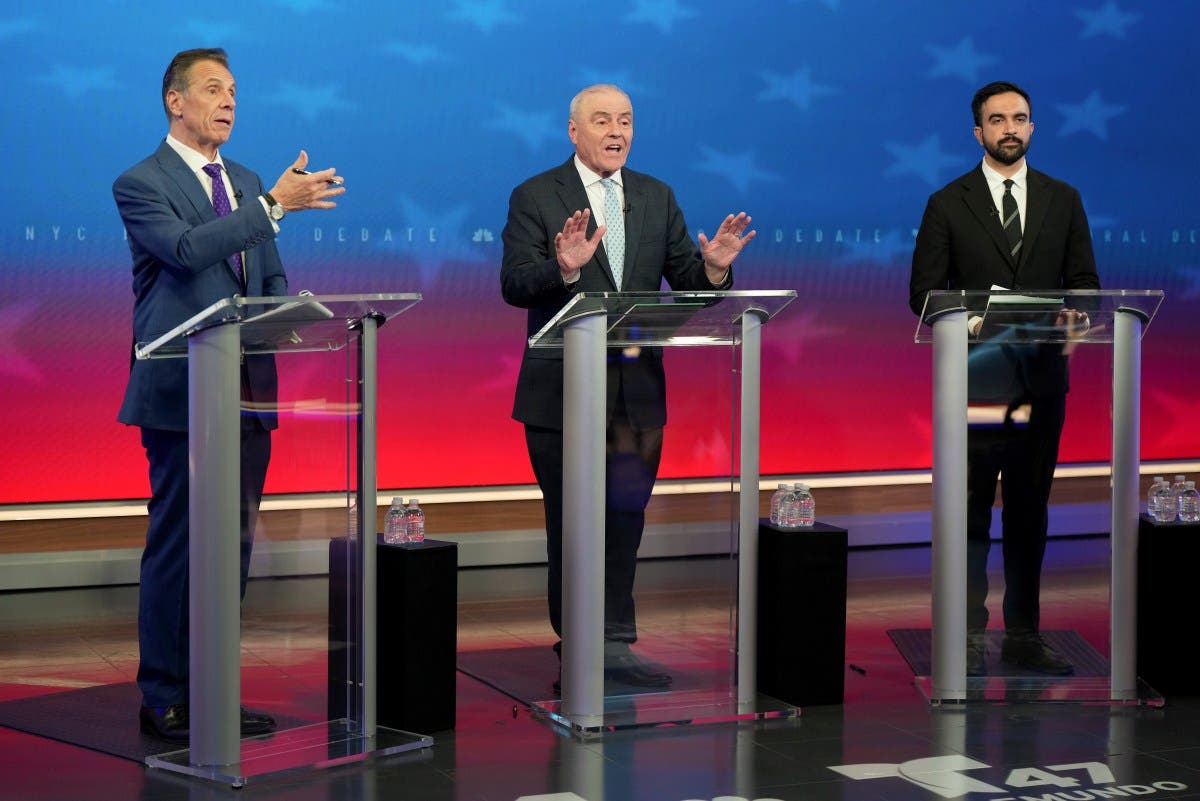With 10 days to go until the New York mayoral election, Zohran Mamdani maintains a clear and consistent lead in the race, polls show.
Newsweek’s latest tracking poll shows Mamdani widening his advantage in the New York mayoral race, securing 45 percent support.
Former Governor Andrew Cuomo trails well behind at 28 percent, while Republican nominee Curtis Sliwa stands at 15 percent.
Newsweek reached out to Mamdani, Cuomo and Sliwa by email to comment on this story outside of normal business hours.
Why It Matters
The New York City mayoral race has become a focal point of national interest, with the outcome expected to reshape the political direction of America’s largest city. The next mayor will steer policy on defining local challenges—from housing affordability and public safety to how the city positions itself in relation to President Donald Trump and the broader Democratic establishment.
Assemblymember Zohran Mamdani has emerged as the favorite of the city’s progressive wing, propelled by an ambitious platform that calls for rent freezes and the creation of publicly owned grocery stores to address soaring food prices. His campaign has drawn high-profile endorsements from Representative Alexandria Ocasio-Cortez and Senator Bernie Sanders, reinforcing his status as the left’s standard-bearer in the race.
A Mamdani victory would make history, marking him as New York City’s first Muslim mayor and signaling a significant generational and ideological shift in its leadership.
 Mamdani Holds Steady Lead in Latest Polls
Mamdani Holds Steady Lead in Latest Polls
Across 10 major survey conducted since early September, Mamdani has polled in the low-to-mid 40s—a level of support that has held steady even as other candidates have struggled to break through.
The most recent Patriot Polling survey (October 18–19) shows Mamdani at 43 percent, Cuomo at 32 percent, and Sliwa at 19 percent. Gotham Polling (October 14–15) reported similar results, with Mamdani at 43 percent, Cuomo at 29 percent, and Sliwa at 19 percent. Quinnipiac University’s New York City poll (October 3–7) shows Mamdani at 46 percent, Cuomo at 33 percent, and Sliwa at 15 percent.
How the Candidates Stack Up With Voters
Mamdani’s strongest backing comes from younger, progressive, and foreign-born voters. According to Fox News, he commands 78 percent among very liberal voters, 67 percent among those under 30, and 63 percent among Democrats. Women under 45 favor him by 62 percent. Patriot Polling reports that Mamdani draws 62 percent support among foreign-born New Yorkers, compared with just 31 percent among American-born voters. He performs particularly well in Brooklyn and among voters identifying as Muslim, Hindu, or atheist, but trails among Catholic and Jewish voters. Gender differences are striking: Mamdani wins 49 percent of women compared with 36 percent of men. He holds a majority among nonwhite voters, including 51 percent of Black voters and 52 percent of Hispanic voters.
Cuomo’s base skews older and more moderate. Fox News found he earns 44 percent among moderates, 44 percent among voters aged 65 and over, and 42 percent among women over 45. He also draws 35 percent of independents. Among Jewish voters, Patriot Polling shows Cuomo narrowly ahead, 42 percent to 38 percent.
Sliwa’s support is concentrated among Republicans and Trump-aligned voters, winning 60 percent of Republicans and 58 percent of Trump supporters, according to Fox News. White voters without a college degree are evenly split across the three candidates, each around 30 percent. Geographically, Sliwa and Cuomo perform best in Staten Island, while Mamdani dominates in Brooklyn.
Adams’ Exit Narrows the Field
After Mayor Eric Adams dropped out of the race, much of his support appeared to transfer to Cuomo, trimming Mamdani’s lead. Quinnipiac found that in the earlier four-way contest, Adams had 12 percent while Cuomo stood at 23 percent. In the three-way race that followed, Cuomo’s support climbed to 33 percent, indicating that many of Adams’ former voters migrated to him—while Mamdani’s overall numbers held steady.
“Andrew Cuomo picked up the bulk of Adams’ supporters cutting into Zohran Mamdani’s lead, but Mamdani’s frontrunner status by double digits stays intact,” said Mary Snow, assistant director of the Quinnipiac Poll. Adams’ name will still appear on the ballot as he withdrew too late for removal.
Favorability Ratings Reveal Polarized Electorate
All three candidates face underwater favorability ratings, though Mamdani’s supporters remain the most energized. Quinnipiac found 43 percent of likely voters viewed Mamdani favorably and 35 percent unfavorably, with 19 percent saying they had not heard enough about him. Cuomo’s numbers were weaker—37 percent favorable, 52 percent unfavorable—while Sliwa registered 27 percent favorable and 40 percent unfavorable. Mamdani’s backers are also the most motivated: 75 percent say they are extremely or very eager to vote, compared with 59 percent for Sliwa and 43 percent for Cuomo. Nearly nine in 10 of Mamdani’s supporters say they are voting for him rather than against another candidate.
Cost of Living, Safety, and Housing Dominate Voter Priorities
The city’s affordability crisis continues to shape the race. Both Fox News and Quinnipiac polls found that voters cite the cost of living, public safety, and housing as their top issues. Mamdani leads among voters most focused on these concerns, with more respondents saying he would best handle the economy, housing, taxes, and crime compared with Cuomo and Sliwa. Despite persistent pessimism about the city’s direction, Gotham Polling found that optimism has improved modestly, with five percent more voters saying they are “very optimistic” about conditions improving under new leadership.
On foreign policy, particularly regarding the Israel–Hamas conflict, Quinnipiac reported that 41 percent of voters said Mamdani’s stance aligns most closely with their own, versus 26 percent for Cuomo and 13 percent for Sliwa. His controversial pledge to honor an International Criminal Court warrant against Israeli Prime Minister Benjamin Netanyahu divided voters: 43 percent opposed the promise, 38 percent supported it, and 19 percent were undecided.
What Happens Next
The New York City mayoral election takes place on November 4.
Incumbent Eric Adams will serve the remainder of his term in office, which ends on December 31, 2025.

